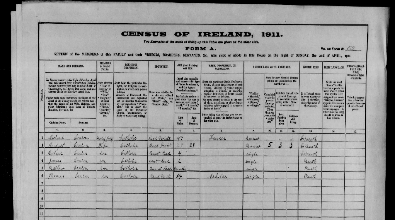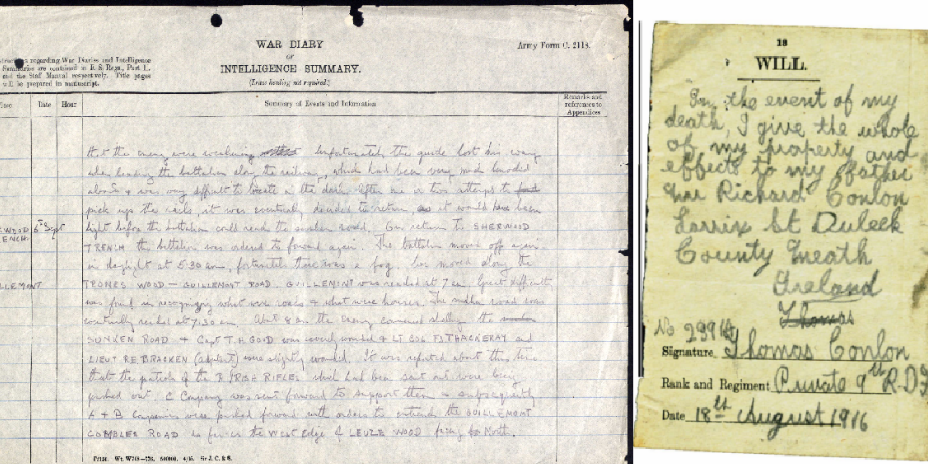RESEARCHING THOMAS
I've always enjoyed history as a subject in school, and when I found out that I had been lucky enough to receive a place on this trip, I was delighted to have the opportunity to engage with history on such a personal level.
After initially being given the name of my soldier, I went about finding what I could online, through the various records available on the internet. Thomas' family turned up, at first, in the 1901 census, and then again in the 1911. As well as this, I found various military records: death, burial, gravestone, etc. From here, I could piece together some loose details about his childhood, and how he died in France.
To the left, we see the Conlon family's census form from 1911, detailing occupants of the house, family members, etc.

Several days were spent conducting footwork in the village of Duleek itself (many thanks to my father for driving me through erratic weather, including a freak blizzard). Chance encounters with some very kind people in the village sent us from door to door, asking about the Conlon family, and the possibility of living relatives in the area. I was fortunate enough to discover the Conlon family plot in the old graveyard in the village, where upon I learned of the extensiveness of Thomas' family. An afternoon was spent in the parish registry office, where I sieved through the available birth records, and compiled a list of all of Thomas' relatives, and mapped out a rough family tree.
By chance, my research aligned with the arrival of the Gallipoli 100 Year Commemoration weekend nearby in Kells. There, I came into contact with Gordon Power, who generously explained the various military records and files that could be found, and what exactly they could tell us about Thomas' experience in France. He scouted out surviving documents, aided and encouraged me to look further, and dive into the archives myself. I was shocked in finding Thomas' will, written in his own hand, and the war diary for his battalion, which details their movements up until the day he died.
At times it seemed that I was looking to no avail, until I came into the contact of Liz Lynch, a member of Duleek Heritage Group. Liz was an invaluable help in giving me a rounded perspective of Duleek at the time that Thomas was alive, and putting me in contact with his living relatives. She kindly lent me books, talked with me for hours on end, and led me throughout Duleek and its surroundings, to Thomas' father's homeplace, and the Conlon family home in the village. She also invited me to an evening with the Duleek Heritage Group, where I learned more about the Conlon family and their situation at the time that Thomas was alive.
To the right, we see the home place of Thomas' father, Richard, located in Bellewstown, four miles outside of Duleek.
-ivhwo2.jpg)
Finally, I was introduced to Thomas' living relative in Duleek, Damien Byrne, who gave me a better perspective of the Conlon family, and what Thomas' life would have been like at home in Duleek before enlisting with the Royal Dublin Fusiliers.
-3xnv8v.jpg)
-u4akzm.jpg)
-f12g4n.jpg)
-nusaxr.jpg)
